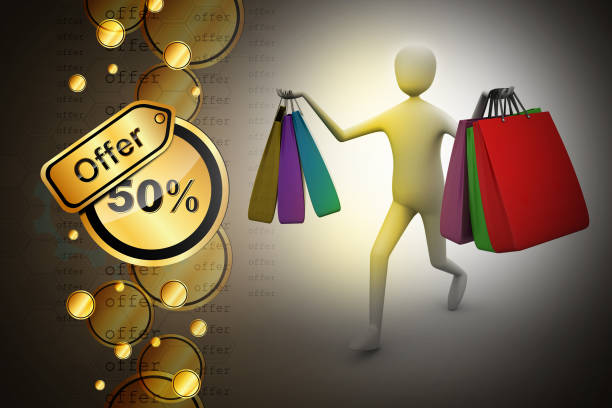Several years ago, we would joke, “I wish there were an app for that,” but now the joke is reality. There is now an app to do whatever it may be.
I have a number of apps on my phone that can help me with a variety of tasks, including tuning my guitar, avoiding traffic jams, and finding audiobooks. They also track my steps, allow me to manage my finances, open the door to the co-working area, purchase train tickets, enroll in online courses, and transform photos into artwork.
Retailers have taken note and developed their mobile applications. Just because you make it doesn’t mean people will use it. People are picky. People won’t use your app because you created it.
If you create an app that meets the needs of your users, they will keep coming back for more. We found seven retailers who did just that.
Determining a good mobile user experience
Clarify what the term “mobile user experience” means before we examine the retailers who have mastered it. What is a good mobile experience? Your app should generally:
Make it easy to use. Know what your users are trying to achieve with your app, and make it easy for them to do it.
Keep your mobile device clutter-free: Reduce elements such as navigation and keep steps to a bare minimum. Make forms easy to use and fill out on the small touchscreen.
Join your omnichannel campaign and provide a seamless experience across your app, your website, your brick-and-mortar store, and social media.
Why Mobile Apps are Important to Mobile Users
What’s the next step once you have proven that you can create an app with your user in mind? Make sure your app is what customers want. Why do users use apps? Apps that are designed to save time and effort are often the most popular, but users also choose apps that offer additional information or enhance their Experience. Do not assume that your app is only going to be quick and simple. It’s important to have a mobile app, but it shouldn’t be the main feature.
7 Retailers giving consumers what they want
Seven retailers occupied distinct niches within the app market because they focused their attention on the main benefit they could offer to the users. We’ve only listed seven retailers below, even though many have mastered mobile user experiences. This is to show the different approaches that retailers can use based on their target audience. Build your app experience around the user. These brands have done it.
Users can visualize their products by using.
Online shopping is great, but it’s not the same as seeing products in person in a physical store. Overstock and IKEA have created apps that allow their customers to experience and see the products that they sell virtually.
#1 As the 7-time winner of Best Retail Mobile Application, Overstock has clearly done something right in terms of mobile user experience. Overstock’s app features augmented reality to help customers visualize the furniture in their homes. It also makes it simple to pay using Google Pay.
# 2 IKEA knows that users who are shopping for furniture want to see how it looks in their homes, so they developed their AR app IKEA Place to satisfy this need. The app scales furniture automatically based on the dimensions of a room. It’s so detailed that users can see textures, light, and shadows. It digitally places IKEA furniture in a room. Users can also capture and share the scene in the app as a picture or video. (And perhaps if customers used the app instead, they would be less likely to get lost in the mazes of IKEA stores …)
When customers want quick and convenient…
Certain brands are able to win the hearts of consumers with their speed and convenience. This is especially true when it comes to food and drinks, but also for repeat purchases such as prescriptions. Starbucks, Chipotle, and Walgreens all offer mobile experiences that satisfy consumers’ demands right now.
#3 Starbucks understands that people want to get their drinks quickly and pay for them as soon as possible. The Starbucks app provides this. The app allows customers to order drinks and food, tip the baristas, and add songs from the store’s playlist.
#4 Walgreens understands that customers do not want to be kept waiting for a prescription refill any longer than they would for a coffee. The app allows customers to easily request a prescription refill by scanning the barcode for the product they need. It also reminds them when the refill is due if they haven’t asked for it. Users receive notifications when their prescriptions are ready to be picked up. They can also use the Pill Reminder as an alarm to remind them when the next dose is due.
Building upon the in-store Experience…
Apps that enhance the in-store shopping experience are most beneficial. 80% of customers shop in physical stores using their mobile devices. Home Depot and Sephora have both mastered the art of this.
#5 Home Depot has large stores with bulky products but few employees to assist customers. The in-store feature of the app is very helpful. The app allows customers to find a specific product in the store and walk straight to it. Home Depot’s mobile app enhances in-store shopping by providing QR codes and barcodes that customers can scan to read more about products and learn more.
#6 Sephora is not only one of the world’s most popular beauty brands, but it has also mastered mobile user experiences, using its app to make online shopping easy and to improve the in-store Experience. Users can also use the Virtual Artist tool to create a new look, shop and earn rewards, and get new ideas while not in the store. Users can scan barcodes in-store to read reviews of products, watch videos on how to use them and check their purchase history.
#7 Oasis, a fashion retailer from the U.K., combined its e-commerce site, mobile application, and brick-and-mortar shop to provide a seamless experience. The sales associates use their iPads to provide product information on the spot when a customer enters the store. When the product is not in stock, the sales associates order it online and send it directly to the customer.
When you’re ready to master the mobile user experience…
MoEngage is the place to go when you are ready to upgrade your retail app or ecommerce app. With NATIV, we’ll help deliver personalized in-app experiences in just minutes. NATIV allows you to upgrade your onboarding process, engage users, and keep them coming back. You can also create targeted messages, analyze campaign performance in detail, and more.




